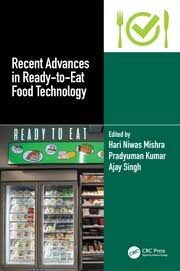Maximizing Productivity in the Food & Beverage Industry: The Power of Area Scan Cameras

Area scan cameras play a pivotal role in verifying the accuracy of packaging content, including barcodes, expiration dates and nutritional information. All images courtesy of Teledyne Vision Solutions.
In the dynamic realm of the food and beverage industry, the pursuit of operational excellence is relentless. Companies endeavor to meet and surpass consumer expectations for quality, safety and sustainability amidst ever-evolving market trends and regulatory standards. At the forefront of this pursuit is the integration of cutting-edge technologies, with machine vision technology including area scan cameras, emerging as a transformative force in driving productivity, enhancing quality control and revolutionizing packaging inspection processes.
A wide range of machine vision technology—from image sensors and cameras to 3D laser profilers to AI-image processing software—significantly enhances productivity in the food and beverage sector. This article will focus on area scan cameras, which capture the two-dimensional area of an object at once in color or monochrome making them a great fit for a variety of industry applications.

Area scan cameras play a pivotal role in this arena by offering high-resolution imaging capabilities that facilitate meticulous inspection of products throughout the production cycle.
Food and beverage imaging applications such as high-speed food sorting, portion cutting, quality monitoring and packaging inspection are constantly looking to improve image capture speeds to reduce production cycle time. Some cameras feature enhanced image acquisition speeds for rapid image acquisition and transfer. In addition, advanced Multiple Region of Interest (ROI) functionality expands imaging capture capabilities even further. Understand what’s “under the hood” of the area scan cameras you are evaluating. Ensure that all the advanced capabilities you need—from in-camera pre-processing to a framework like Teledyne DALSA’s trigger-to-image-reliability (T2IR)—are available to enhance productivity.
The Role of Area Scan Cameras in Quality Control
Quality control stands as a linchpin of success in the food and beverage industry, where consumer safety and satisfaction reign supreme. Area scan cameras play a pivotal role in this arena by offering high-resolution imaging capabilities that facilitate meticulous inspection of products throughout the production cycle.
For instance, within food processing facilities, area scan cameras serve as vigilant sentinels, detecting contaminants such as foreign objects or microbial growth that pose health risks to consumers. Armed with real-time imaging prowess, these cameras empower manufacturers to enact proactive measures, ensuring compliance with stringent food safety regulations.
In addition, area scan cameras bolster quality assessment efforts by enabling the identification of defects such as bruising, discoloration, or irregularities in shape and size. This granular level of inspection allows for the swift removal of subpar products from the production line, thereby minimizing waste and optimizing resource utilization.
Enhancing Packaging Inspection with Area Scan Cameras
Packaging assumes a dual role in the food and beverage industry, serving as both a protective barrier and a marketing vehicle. Thus, ensuring the integrity and accuracy of packaging materials is imperative to safeguarding product freshness and brand reputation. Area scan cameras provide a comprehensive solution for packaging inspection, enabling manufacturers to detect defects and discrepancies with unparalleled precision.
In the realm of food packaging, area scan cameras facilitate the identification of imperfections such as seal integrity breaches, misalignments or labeling errors that could compromise product quality or lead to regulatory non-compliance. By capturing high-definition images of packaging materials, these cameras empower automated inspection algorithms to flag anomalies in real time, mitigating the risk of recalls and consumer dissatisfaction.
Furthermore, area scan cameras play a pivotal role in verifying the accuracy of packaging content, including barcodes, expiration dates and nutritional information. By ensuring compliance with labeling regulations and product specifications, manufacturers uphold transparency and trust with consumers while streamlining inventory management and traceability processes.

Shown are some examples of food and beverage inspection applications.
Area Scan Camera Applications in Food and Beverage Packaging Inspection
1. Seal Integrity Inspection:
- Area scan cameras are instrumental in detecting leaks or imperfections in packaging seals, ensuring product freshness and preventing contamination.
- By capturing detailed images of seal profiles, these cameras enable automated algorithms to identify irregularities and trigger corrective actions, such as resealing or removal from the production line.
2. Labeling Verification:
- Area scan cameras facilitate the verification of label accuracy, including barcode readability, alignment and content consistency.
- Through image analysis techniques, these cameras ensure compliance with regulatory requirements and enable seamless integration with inventory management systems for accurate tracking and traceability.
3. Packaging Material Inspection:
- Area scan cameras are deployed to inspect packaging materials for defects such as tears, wrinkles or foreign particles.
- By capturing high-resolution images of packaging surfaces, these cameras empower manufacturers to preemptively identify issues and uphold product aesthetics and shelf appeal.
4. Detecting Dents and Damage in Aluminum Cans:
- Area scan cameras offer a robust solution for detecting dents and damage in aluminum cans, ensuring product integrity and consumer safety.
- By employing advanced imaging algorithms, these cameras enable manufacturers to identify even subtle imperfections in can surfaces, thereby mitigating the risk of product contamination or leakage.
In conclusion, area scan cameras represent a paradigm shift in the food and beverage industry, offering unparalleled capabilities for enhancing productivity, quality control and packaging inspection processes. By leveraging advanced imaging technologies, manufacturers can mitigate risks, optimize operational efficiency and deliver superior products that meet the evolving demands of consumers and regulatory authorities alike.
As the industry continues to embrace digital transformation and automation, the adoption of area scan cameras is poised to accelerate, driving innovation and competitiveness across the entire value chain. By investing in these cutting-edge solutions, companies can position themselves as leaders in the era of smart manufacturing, setting new standards for excellence and sustainability in the global food and beverage market.
About Area Scan Cameras
Area scan cameras capture high-resolution, two-dimensional images in a single frame, making them vital for high-speed food sorting, quality monitoring, packaging inspection and more.
These cameras offer advanced user control and various imaging options, including color, monochrome, Near-Infrared (NIR), and Short-Wave Infrared (SWIR), to meet diverse needs. Unlike line scan cameras, which build images line by line, or 3D profilers, which create depth maps, area scan cameras capture entire scenes at once. This makes them cost-effective and easier to set up and integrate into existing systems, ensuring efficiency and compliance.
Examples from Teledyne include the Forge, Genie Nano, and Blackfly S. These area scan GigE cameras can enhance efficiency, refine quality control, and deliver exceptional products to meet the dynamic needs of equipment builders and system integrators within the food and beverage industry.
Looking for a reprint of this article?
From high-res PDFs to custom plaques, order your copy today!










